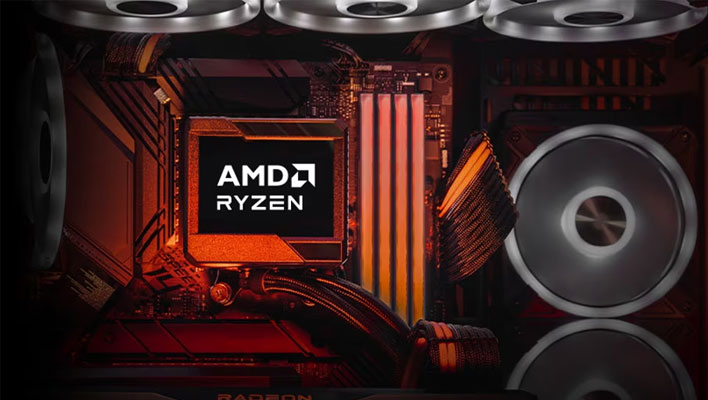AMD Pilfers Even More x86 CPU Share From Intel To Claim A Huge Chunk Of The Market

In just one quarter of sales, AMD has gone from being within striking distance of claiming a third of the overall x86 CPU market to exceeding it. As it has done for years, and more earnestly since the introduction of Zen, AMD continues to chip away at rival Intel and its huge market share lead. What was once a monstrous disparity, however, is now down to 'just' a big one.
That's according to the latest market share data from Mercury Research, which has long kept a pulse on the x86 CPU market. The figures for the first quarter of 2023 show AMD increasing its overall x86 CPU share to 34.6 percent, which is a gain of 3.3 percent from the last quarter and a 6.9 percent jump from where AMD stood a year ago.
AMD's jump in share came entirely at the expensive of Intel. What about VIA/Zhaoxin, the only other x86 player? Mercury Research notes that it's highly likely it accounts for some measure of x86 CPU share above zero, "but we have extremely limited visibility into this small segment of the CPU business."

Source: Mercury Research
As outlined above, Intel's share is now down to 65.4 percent, versus 68.7 percent last quarter and 72.3 percent a year ago. It's still dominating, but the same was true of Internet Explorer in the earlier days of the browser wars. That's not to say the same thing will happen to Intel, as it's a very different market and set of circumstances. At the same time, it's no small thing to concede over a third of the market to a reinvigorated rival.
There's also plenty of nuance behind the raw figures. Mercury Research caveats its data by saying the share movement here (and in the past few quarters) is largely due to suppliers "differing in the depth and timing of their inventory corrections, rather than indicating sales-out share of the PC market." The latter isn't likely to be known with accuracy until later in the year.
Regardless, these are the figures that are out there. No matter how they came about (inventory corrections, demand, sales, and so forth), AMD is clearly on the rise with regards to market share (even as its chip sales decline). It's also benefiting more than Intel from a high inventory of CPUs and PCs reportedly resulting in more drops in processor shipments across the board.
"Most of the downturn in shipments in all segments is blamed on
excess inventory shipping in prior quarters impacting current
sales—the CPU suppliers are also deliberately limiting
shipments to help increase the rate of inventory consumption," Mercury Research stated.
The overall x86 CPU figures include IoT and SoC chips, which take into consideration custom chips in game consoles like the PlayStation 5 and Xbox Series X|S, among other devices. If taking those chips out of the equation, AMD's share of the market lands much lower at 17.2 percent versus Intel at 82.8 percent. That's the same as it was last quarter.
When looking at the more lucrative server segment, AMD managed to bump its share to 18 percent, which is up from 17.6 percent last quarter and 11.6 percent a year ago. This will be the area to keep an eye on as companies scramble to ride the AI wave that is engulfing the market.

